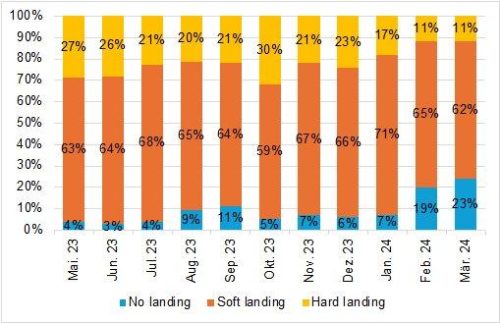
Invoice Financing vs Supply Chain Financing: Which is Right for Your Business?
Introduction to Invoice Financing and Supply Chain Financing
In the world of business finance, understanding the right options for your company’s cash flow needs can be a game-changer. Two popular methods, invoice financing and supply chain financing, offer unique solutions to improve liquidity. While both aim to optimize working capital, they cater to different aspects of the financial ecosystem. It’s essential to grasp the nuances of each to determine which aligns best with your business strategy.
Invoice financing allows businesses to unlock cash tied up in unpaid invoices, providing immediate access to funds. On the other hand, supply chain financing focuses on extending payment terms for buyers while ensuring suppliers get paid faster. This introduction sets the stage for a deeper dive into how these financing methods operate and their potential impact on your business operations.
Understanding Invoice Financing
Invoice financing is a financial tool that enables businesses to leverage their outstanding invoices to gain immediate cash flow. This method is particularly useful for companies facing delays in customer payments but needing to cover operational expenses promptly. By selling their invoices to a third party, businesses can receive a significant portion of the invoice value upfront, often around 80-90%.
The process typically involves a financier who assesses the creditworthiness of the business’s customers rather than the business itself. This means that even companies with less-than-perfect credit can benefit from invoice financing. The financier then collects the payment from the customers directly, allowing the business to focus on growth and operations without worrying about cash flow interruptions.
Some key advantages of invoice financing include:
- Quick access to funds without waiting for invoice maturity.
- Flexibility in managing cash flow to meet immediate financial obligations.
- Reduced need for traditional bank loans, which often require extensive documentation and credit checks.
However, it’s important to consider the costs involved, as financiers typically charge fees or interest on the advanced funds. Despite this, many businesses find the benefits of improved liquidity and financial stability outweigh the costs.
Exploring Supply Chain Financing
Supply chain financing (SCF) is a strategic approach that enhances cash flow by optimizing the payment terms between buyers and suppliers. Unlike invoice financing, which focuses on receivables, SCF is about extending payment terms for buyers while ensuring suppliers receive early payments. This creates a win-win situation, improving the financial health of both parties involved.
In a typical SCF arrangement, a third-party financier pays the supplier on behalf of the buyer. The buyer then repays the financier at a later date, allowing them to hold onto their cash longer. This arrangement not only strengthens supplier relationships but also enhances the buyer’s working capital.
Key benefits of supply chain financing include:
- Extended payment terms for buyers without straining supplier cash flow.
- Improved supplier relationships through timely payments.
- Enhanced financial stability across the supply chain, reducing the risk of disruptions.
SCF is particularly advantageous for large corporations with strong credit ratings, as they can secure better financing terms. However, the digitalization of financial services is making SCF more accessible to smaller businesses, offering them new opportunities to manage their cash flow effectively.
Comparing Invoice Financing and Supply Chain Financing
When it comes to choosing between invoice financing and supply chain financing, understanding their differences is crucial. Both methods aim to improve cash flow, but they serve distinct purposes and involve different processes.
Invoice financing is centered around the business’s receivables. It provides immediate cash by leveraging outstanding invoices. This method is beneficial for businesses needing quick liquidity without waiting for customer payments. The focus is on the company’s ability to convert receivables into cash swiftly.
In contrast, supply chain financing is a collaborative approach involving both buyers and suppliers. It optimizes payment terms, allowing buyers to extend their payment period while ensuring suppliers are paid promptly. This approach is ideal for businesses looking to strengthen their supply chain relationships and manage cash flow more strategically.
Here’s a quick comparison:
- Initiation: Invoice financing is initiated by the seller, while supply chain financing is typically initiated by the buyer.
- Focus: Invoice financing focuses on receivables; supply chain financing focuses on payables.
- Participants: Invoice financing involves the seller and financier; supply chain financing involves the buyer, supplier, and financier.
- Cost: Invoice financing may involve higher fees due to the risk taken by the financier. Supply chain financing often offers more favorable terms due to the buyer’s creditworthiness.
Ultimately, the choice between these two financing options depends on your business’s specific needs, such as cash flow requirements, the nature of your supply chain, and your relationships with customers and suppliers.
Which Financing Option Fits Your Business Needs?
Deciding between invoice financing and supply chain financing hinges on your business’s unique circumstances and financial goals. Each option offers distinct advantages, and the right choice depends on several factors.
Consider invoice financing if your business frequently encounters cash flow gaps due to delayed customer payments. This option is particularly suitable for companies that need immediate liquidity to cover operational expenses or seize growth opportunities. It’s a straightforward solution for businesses with a steady stream of receivables but occasional cash flow crunches.
On the other hand, supply chain financing might be the better fit if your business aims to optimize its supply chain and maintain strong supplier relationships. This option is ideal for companies that can leverage their creditworthiness to extend payment terms without impacting supplier cash flow. It’s a strategic choice for businesses looking to enhance their working capital management and strengthen their supply chain resilience.
Here are some considerations to help guide your decision:
- Cash Flow Needs: If immediate cash is crucial, invoice financing provides quick access to funds.
- Supplier Relationships: If maintaining strong supplier ties is a priority, supply chain financing ensures timely payments.
- Business Size and Creditworthiness: Larger businesses with strong credit may benefit more from supply chain financing.
- Cost Considerations: Evaluate the fees and terms associated with each option to determine the most cost-effective solution.
Ultimately, the best financing option aligns with your business’s operational needs, financial health, and strategic objectives. Assess your current situation and future goals to make an informed decision that supports your business’s growth and stability.
Industry Examples and Case Studies
Examining real-world examples can provide valuable insights into how businesses effectively use invoice financing and supply chain financing. These case studies highlight the practical applications and benefits of each financing method across various industries.
In the manufacturing sector, a mid-sized electronics company faced challenges with delayed payments from retailers. By leveraging invoice financing, they accessed immediate cash to invest in new production lines, boosting their output and meeting growing demand. This approach allowed them to maintain operations smoothly without waiting for invoice settlements.
In contrast, a large retail chain opted for supply chain financing to support its extensive network of suppliers. By extending payment terms, the retail chain improved its cash flow while ensuring suppliers received timely payments. This strategy strengthened supplier relationships and ensured a steady supply of goods, crucial for meeting consumer demand during peak seasons.
Another example comes from the automotive industry, where a parts supplier utilized supply chain financing to manage cash flow efficiently. By collaborating with a financier, they offered early payment options to their suppliers, securing favorable terms and uninterrupted supply. This approach helped them navigate economic fluctuations and maintain production schedules.
These examples illustrate how businesses tailor financing solutions to their specific needs, whether it’s addressing cash flow gaps or optimizing supply chain operations. By choosing the right financing method, companies can enhance their financial stability and drive growth.
Trends and Innovations in Financing Solutions
The landscape of financing solutions is rapidly evolving, driven by technological advancements and changing business needs. Both invoice financing and supply chain financing are benefiting from these innovations, making them more accessible and efficient for businesses of all sizes.
One significant trend is the rise of digital platforms that streamline the financing process. These platforms offer user-friendly interfaces and real-time data analytics, enabling businesses to manage their finances more effectively. With digital solutions, companies can quickly assess their financing options, track transactions, and make informed decisions with greater ease.
Another innovation is the integration of blockchain technology in financing. Blockchain provides a secure and transparent way to record transactions, reducing the risk of fraud and errors. This technology is particularly beneficial for supply chain financing, where multiple parties are involved, and transparency is crucial.
Additionally, the use of artificial intelligence (AI) and machine learning is transforming how financiers assess credit risk and predict cash flow needs. These technologies analyze vast amounts of data to provide more accurate risk assessments and tailor financing solutions to individual business requirements.
Lastly, the trend towards sustainability is influencing financing solutions. Many financiers are now offering green financing options, encouraging businesses to adopt environmentally friendly practices. This shift not only supports sustainable development but also aligns with the growing consumer demand for responsible business practices.
These trends and innovations are reshaping the financing landscape, offering businesses more options and flexibility than ever before. By staying informed about these developments, companies can leverage the latest tools to enhance their financial strategies and achieve their growth objectives.
Conclusion: Choosing the Right Financing Option for Your Business
In the dynamic world of business finance, selecting the right option between invoice financing and supply chain financing can significantly impact your company’s financial health and operational efficiency. Each method offers distinct advantages tailored to different business needs, whether it’s immediate liquidity or optimizing supply chain relationships.
When deciding, consider your company’s specific cash flow requirements, the nature of your customer and supplier relationships, and your strategic financial goals. If quick access to cash is paramount, invoice financing provides a straightforward solution. Conversely, if strengthening supplier ties and extending payment terms are priorities, supply chain financing offers a strategic advantage.
It’s also essential to weigh the costs and benefits of each option, taking into account the fees involved and the potential impact on your business’s creditworthiness and growth potential. Engaging with financial advisors or leveraging digital platforms can provide additional insights and help tailor the best financing strategy for your business.
Ultimately, the right choice aligns with your business’s operational needs and long-term objectives. By carefully evaluating your options and staying informed about industry trends and innovations, you can make a decision that supports your company’s success and sustainability in an ever-evolving financial landscape.
Die Provimedia GmbH ist ein Online-Verlag mit Sitz in der Region Stuttgart. Wir schaffen wertvolle Informationen in unterschiedlichen Branchen um Wissen schnell und einfach zugänglich zu machen. Wir haben uns auf übersichtliche Webseiten und Auffindbarkeit von Informationen spezialisiert.
Provimedia GmbH
Weidenweg 12
74321 Bietigheim-Bissingen
Telefon: +49 (7142) 3442727
Telefax: +49 (7142) 2279985
http://provimedia.de
CEO
Telefon: +49 (7142) 3442727
E-Mail: info@provimedia.de
![]()




